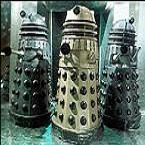Mike Rothery
Posts: 180
Joined: 10/9/2000
From: Canberra, Australia
Status: offline

|
quote:
Originally posted by Casper:
In real life, it is not true for AP round. The AP head need to travel a certain distance, like a 100 to 200 meter before the AP head can reach it velocity and become effective. However as it goes further it effectiveness drop too.
Like wise HE or HEAT or sometime we refer to chemical round is different. It does not require the velocity to do so. The penetration is remain the same through the whole effective range. However at point blank u will be damaged too. Imagine a 152 mm gun firing a HE round at 50 m and hit the target. It 30 kg of explosive booom right infront u. Wow that must be hurting...... :D
huh?
AP relies upon the kinetic energy effect of htting a target at the highest possible velocity, with the greatest mass at the smallest point of concentration (the pointy end). The shape of the projectile is a compromise between aerodynamic drag, in-flight stability and maximum mass. The faster it is going the more energy it contains. Therefore it has its best performance immediately upon finishing its accelaration, which if the gun is designed properly, should be immediately before leaving the barrel. From that point on its is losing energy due to friction and gravitational pull.
APHE shares the same penetrative limitations of the AP round, but also contains a small HE charge to do more damage internally.
HE is a more complex subject. Normally HE was nose contact fused, with or without delay. The delay lets it bury itself deeper before detonation for damaging dug-in position etc. The howitzer is the preferred delivery method so that the shell has a chance to fall inside the trenches and then detonate. HE fired in a flat trajectory is a pretty marginal weapon, ie when fired from tanks. It can take on buildings OK, and fire at things like trucks and artillery pieces, but is weak against entrenchments and infantry in the open. When you use HE in the direct fire role against infantry you have to hit the ground near them to get the shell to detonate, otherwise it will just whistle between them and keep going. Likewise with entrenchments the shells are likely to skip over the trenches and detonate behind.....its very unlikely that you would get one into the trench.
HE shells also came in time fused varieties to acheive an airburst effect, but these were rarely used in tank guns.
HEAT does not need much forward momentum to function, in fact the more the spin on the shell the less efficient the penetrating jet.
_____________________________
MikeR
|
 Printable Version
Printable Version








 New Messages
New Messages No New Messages
No New Messages Hot Topic w/ New Messages
Hot Topic w/ New Messages Hot Topic w/o New Messages
Hot Topic w/o New Messages Locked w/ New Messages
Locked w/ New Messages Locked w/o New Messages
Locked w/o New Messages Post New Thread
Post New Thread